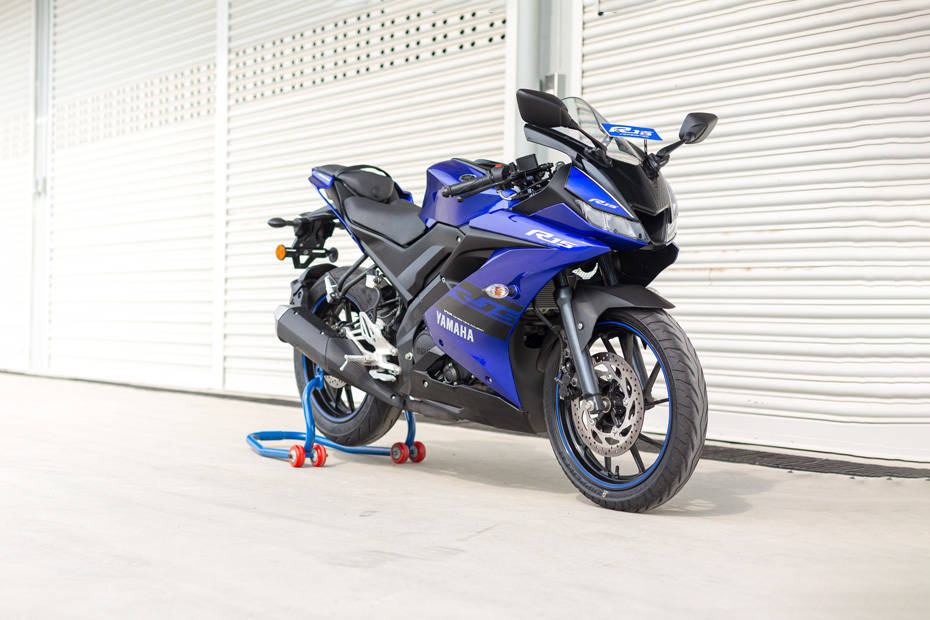Variable Valve Actuation (VVA ) On The Yamaha R15 V3 Explained
Modified On Jul 7, 2019 10:19 PM By Gaurav Sadanand for Yamaha R15S
- 16572 Views
- Write a comment
VVA allows the engine to run two valve timings - one for better bottom end grunt and the other for top end performance. Here’s how it works

VVA (Variable Valve Actuation) or VVT (Variable Valve Timing) has been around for decades. In fact, earlier iterations of this concept date back to the 1980s. Unfortunately, with the limitations in technology back then, two-wheeler manufacturers found it difficult to integrate the tech into production motorcycle engines.
Cut to 2019 and bikes as small as the Yamaha R15 V3 feature VVA while bigger motorcycles like the R 1200 GS range and the 2019 S 1000 RR steps it up a notch with 'ShiftCam' technology. Today, we take a closer look at VVA and how it functions.
How do valves work?
Let’s get the basics out of the way first. IC (Internal Combustion) engines either have a two-valve or four-valve setup based on the type of motorcycles. A two-valve setup is most commonly seen on budget-friendly commuter motorcycles that focus on bottom end torque and fuel efficiency. A four-valve configuration is usually offered on performance motorcycles for that top end grunt. Valves work in conjunction with the engine and the carb/fuel-injection systems. However, the opening and closing of these valves are operated by either a single (SOHC) or dual overhead camshaft (DOHC) which control the feed of air/fuel mixture into the engine and the outlet of exhaust gases.
A four-valve setup uses two larger valves for intake and two smaller ones for exhaust. The configuration is smaller in dimension and lighter in mass compared to a two-valve configuration. Thanks to this, the valves travel freely and at a higher frequency, enabling the engine to run at higher rpm and extract more performance.
Importance of valve timing:

The precise control over the opening and closing of these valves is called valve timing, and it's absolutely crucial. Camshafts, valves, pistons and crankshafts work together for proper combustion in a cylinder. Any inconsistency in this operation could lead to improper combustion which results in low fuel economy and lack of power.
In a four-stroke cycle, the camshaft needs to complete two full rotations (720 degrees), rotating a full 360 degrees every time the piston goes from top-dead-centre (TDC) to bottom-dead-centre (BDC) and back. In bikes, a cam chain is used to connect the camshaft to the crankshaft. As a result, the camshaft rotates in sync with the crankshaft which runs the piston.
How cam profiling affects valve timing and lift:

Cam rotation comprises of four key aspects - timing, duration, overlap and lift. Simply put, the ‘cam timing' controls when the valve opens while ‘lift’ controls the distance of the opening. More lift means the valve is open for a longer duration allowing for more air-fuel-mixture to get into the combustion chamber.
Simply put, the valve opening relies on the shape of the cam lobes, which force the valves to open as the camshaft rotates. The larger a cam profile, the longer a valve will remain open.
What is Variable Valve Timing:
A two valve engine offers better low and mid-range torque as opposed to a four-valve engine which generates better top end performance. This is where Yamaha’s VVA (another name for VVT) comes into play, it offers the best of both worlds. Variable Valve Actuation (VVA) makes the engine more flexible, offering better low-end grunt without compromising on top end performance.
How Variable Valve Timing works:

Essentially, the system works by shifting between two different intake cam lobes - one for low engine revs and the second for higher revs.
VVA uses the first cam between 0rpm to 7400rpm. This cam offers better low-end grunt. At 7400rpm, an actuator pushes a pin in the rocker arm to activate the second cam profile with a larger lobe. The second camshaft also opens the intake valves by an additional 2mm, letting in more air and fuel for higher combustion. The mechanism then disengages the pin when the revs drop below 7,400rpm, shifting back to the first cam.
The VVA on the Yamaha R15 V3 is a fairly complex setup but it delivers in spades in terms of performance and fuel efficiency. ShiftCam technology, on the other hand, steps it up a notch, so we’ll be covering that at a later stage.
